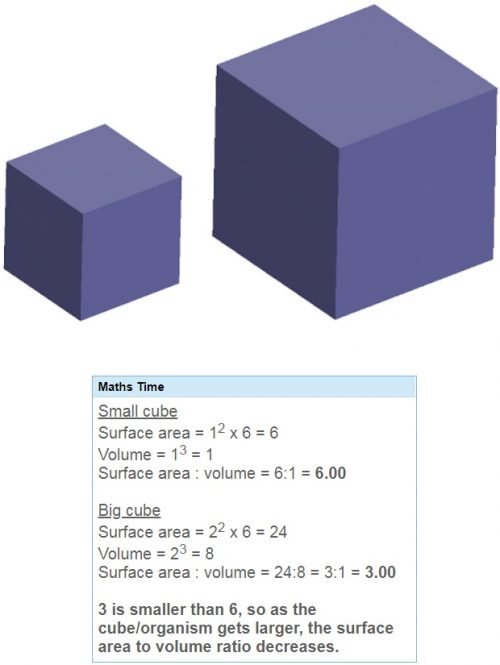Size and Surface Area
The exchange of heat and substances
Volume and surface area
The exchange of heat and substances
Organisms exchange substances and heat with their environment all the time, and this possibility is crucial to survival. The specific way in which this is achieved is very tightly related to the shape and structure of the specific organism, as well as its environment. For example, unicellular organisms are so small that molecules such as oxygen and water can readily diffuse in and out via the membrane, due to the short diffusion pathway. Could this be achieved by a human, or even a bee? No – they are simply too big.
Volume and surface area
Two properties are important to consider here: the volume of an organism, and the surface area of an organism. The volume is what determines the amount of substances which need exchanging, while the surface area determines the amount which can be exchanged.
Key principle: as the size of an organism increases, the surface area to volume ratio decreases.
That might seem hard to really understand. Why use a ratio in the first place? Well, the ratio shows the relationship surface area and volume ratio, i.e. how similar or dissimilar are they?

3 is smaller than 6, so as the cube/organism gets larger, the surface area to volume ratio decreases.
What this basically means is that the larger an organism gets, the less surface area is available to serve its increasing needs due to its increasing volume. So what adaptations do larger organisms have…

